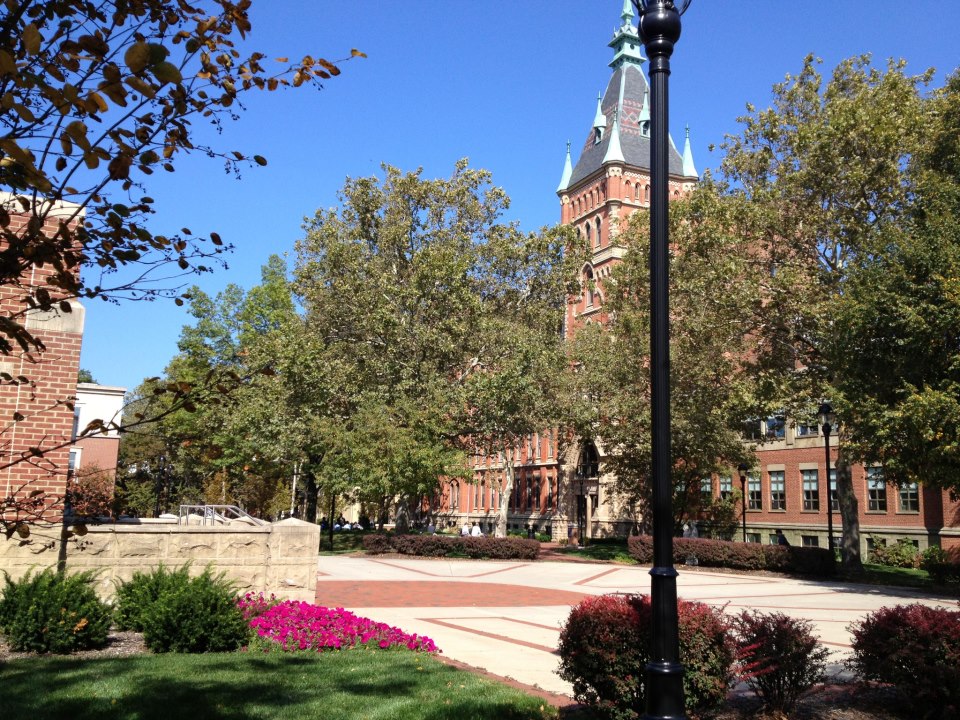by Kellen Dugan ‘15
The atmosphere at Saint Ignatius High School can accurately be described as one of great diversity. Diversity of race, culture, socio-economic status, religion, sexual orientation, and geographic location can all be found within the heterogeneous Saint Ignatius student body. The number of students of all underrepresented walks of life enrolling at the school is greater than ever, and it is still increasing.
The increasing diversity on campus poses important questions about whether students are succeeding in accepting and respecting one another’s differences, as well as whether Saint Ignatius is accommodating the many cultural, ethnic, religious, and sexual differences on campus.
Vince Hwang ‘14, President of Multicultural Student Union and Chairman of the Student Climate Committee, and De’Shaun Adair ‘14, African Methodist Episcopal preacher and Christian Action Team activist, said that the school is imperfect but improving.
Vince, an Asian-American senior, believes that the transition for any student from grade school to Saint Ignatius is difficult enough already, but says the “biggest obstacle” for students of multicultural backgrounds is the more difficult task of “fitting in.”
“I had a very hard time fitting in and discovering my identity in such a relatively homogeneous environment,” he said. “It took a long time to understand where I belong in relation to not only this school but also this city and even this country.”
Vince also said that, despite the growing numbers of diverse students enrolling, the “peer encouragement and acceptance level” of aforementioned diversity has not grown proportionally with the number of students, which can cause problems.
“There haven’t been many race-related insults or comments that I’ve personally witnessed, but there have been a few,” he said, “and a few is too many.”
While emphasizing that there is room to improve, Vince also stressed the many positive pro-diversity initiatives at Saint Ignatius, including the Multicultural Student Union, the Student Climate Committee, and the Multicultural Affairs branch of the Administration, directed by Mr. Jason Reed ‘95.
Vince said that Saint Ignatius is doing the best that it can to accommodate its diverse student body, and he only offered one specific improvement: a more diverse faculty.
De’Shaun, an African American senior, rated Saint Ignatius a six out of ten in regards to effectively making the adjustment for multicultural students easier. De’Shaun specifically remembers struggling to find “friends to sit with during lunch and free periods” during his freshman year. He also believes that fitting in is a difficult thing to do at Saint Ignatius, especially for students of different walks of life.
“Believe it or not, my religion helped me get to know more about other people,” he said, “by giving me something to talk about. It also gave people an opportunity to come see me preach at my Church.” De’Shaun mentioned that the environment wasn’t always accepting and open-minded, recalling a few incidents of generalizations due to race, “but luckily there’s not a whole lot of that.”
De’Shaun also joined Vince in praising the appeals and comforts of Mr. Reed’s office, especially for students struggling to fit in or trying to find their identity. “Mr. Reed’s office is always open to everyone from all walks of life. It truly made everything easier for me,” he said, reflecting on his years at school.
One possible improvement De’Shaun offered was the implementation of “cultural courses to teach students the importance and significance of specific cultures, especially those that are passed over by regular history classes.” He believes that the courses could be very instrumental in educating the student body about the significance of diversity.
In addition to the student perspective, Mr. Jason Reed ‘95, Director of Multicultural Affairs, offered a balanced view of the school’s atmosphere for diversity. Mr. Reed admitted that numbers of students from diverse backgrounds attending the school when he was a student was far fewer than the number now, but he also stated that the community in which he went to school had more unity than the unity present today at school. “We didn’t see each other as colors, we looked at each other as human beings and respected one another equally,” he said. “Overall, I had a great experience,” adding afterward, “You have to learn from each other to become the total person, the cura personalis, and that’s what I tried hardest to do here.”
While admitting there were a few isolated incidents of racism, he believes that culture has changed since he went to school, and thus changed the circumstances in which students are placed now. “I’ve witnessed many more incidents of racism and hate-related insults as an administrator than I did as a student, by far,” he said.
“My goal in 2005 was to create a comfort zone for all students. I wanted to teach students how to look at their neighbors as equals, as humans. All humans deserve respect,” said Mr. Reed. According to Vince and De’Shaun, Mr. Reed has accomplished his goal for the most part.
Mr. Reed’s list of goals includes heightening awareness and respect for diversity, fostering a community that embraces every dimension of diversity, and creating a comfortable environment for all students. He is proud of what the school has accomplished, but said that the work is not over.
“We’ve come a long way, in making this school a better place for all, but we still have a long way to go,” Reed said.






